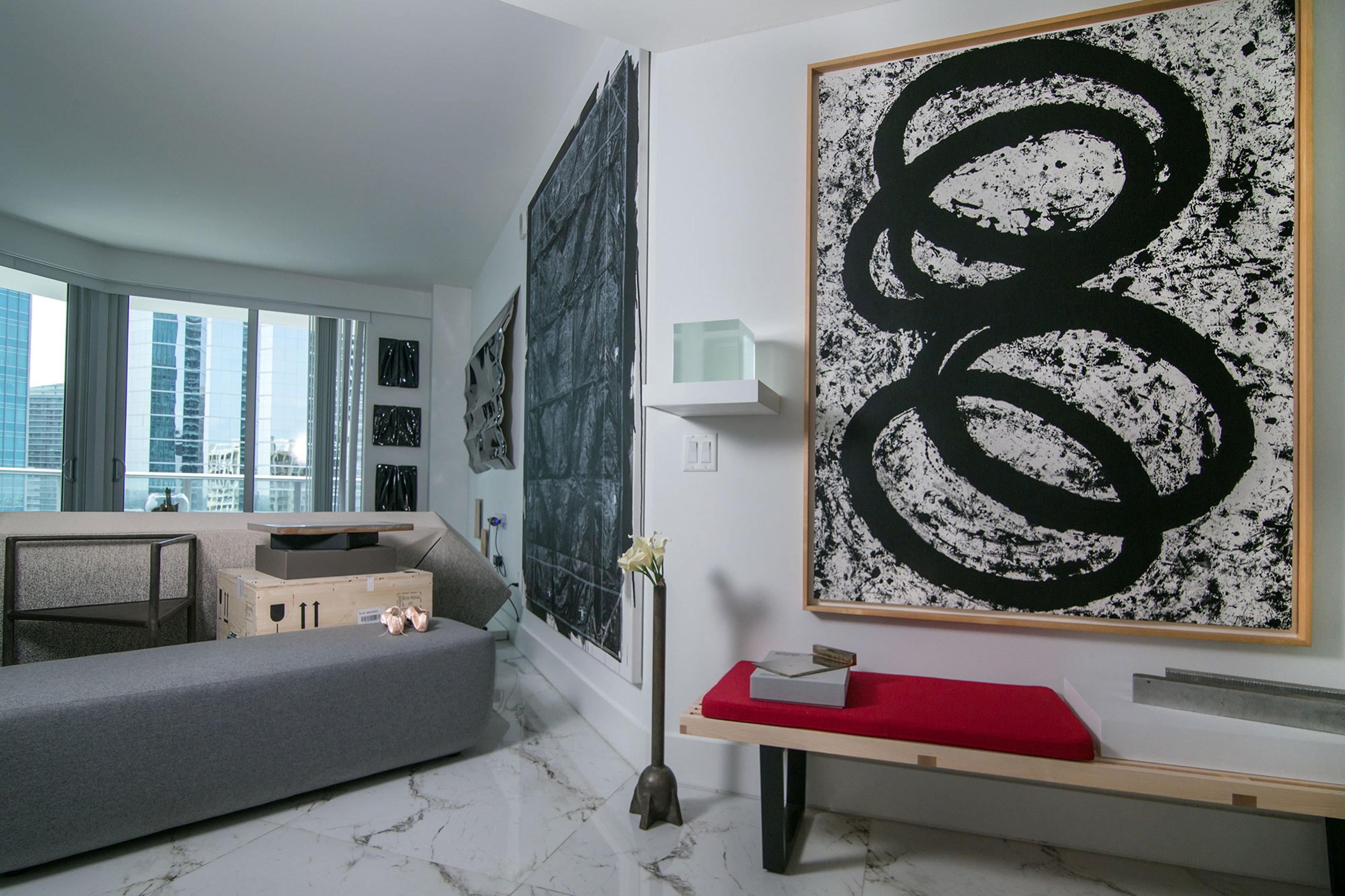

Roberto Toscano, Miami-based collector, composer, and founder of the contemporary art foundation Arbor-Borlem invites Collecteurs into his art filled home.
Collecteurs: Minimalist, industrial works by artists Oscar Tuazon and Daniel Turner predominate your personal collection. What corners of the art world are you interested in collecting? What draws you there?
Roberto Toscano: I think to understand my collection, one should consider what prompted me to start acquiring work in the first place**:** the desire to live around and interact with artwork that looked to solve problems similar to those I was grappling with in my own work as a composer. I was always attracted to sculpture and I decided that my collection should focus on concerns extending out of sculpture and/or the planning of sculpture.
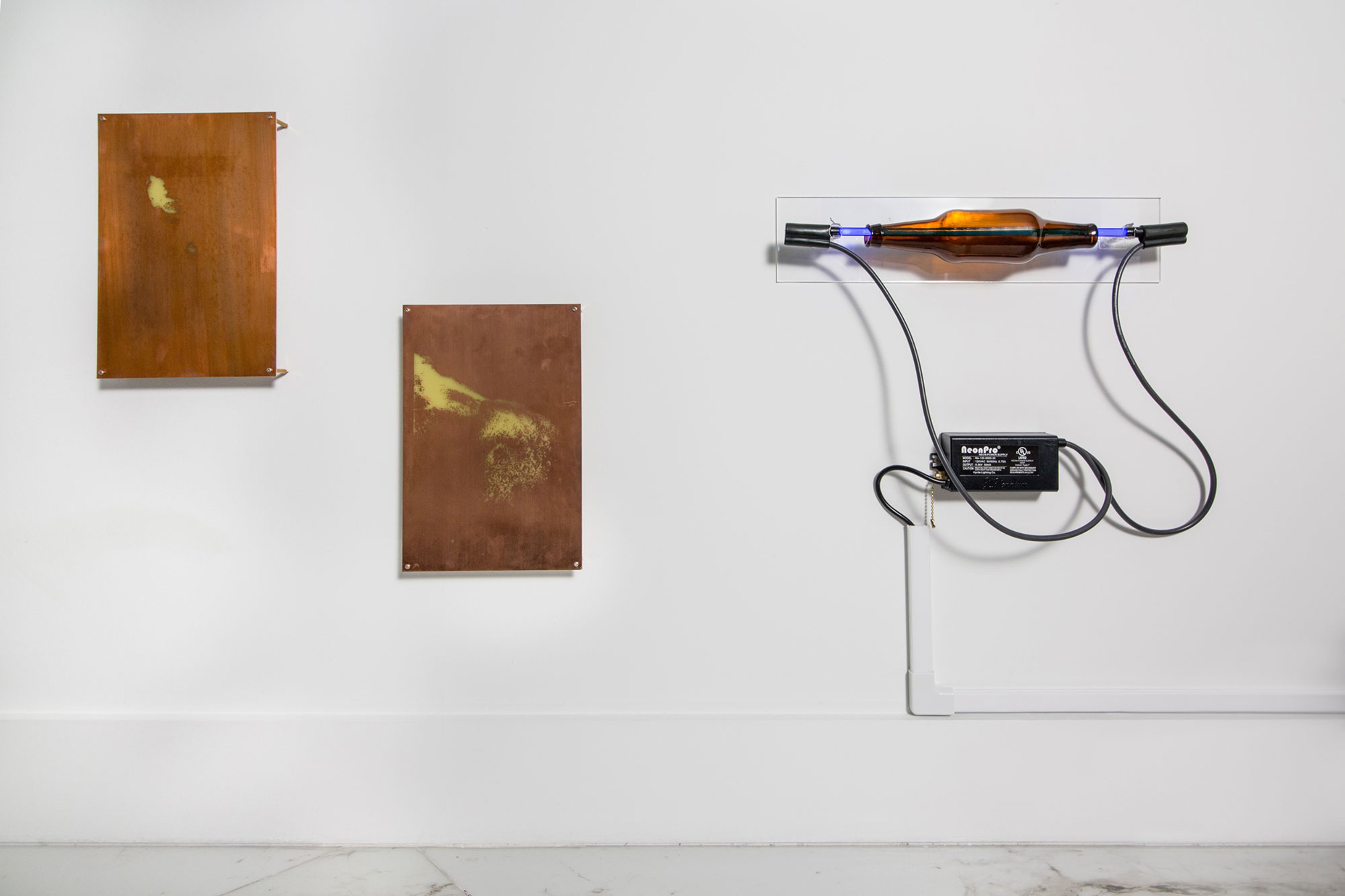
In a sense, I don’t see my aesthetic concerns as being centered around minimalism per se—the Basin Theology of Sterling Ruby is maybe more maximalist than minimalist and he’s certainly looking to question tropes coming out of minimal and post-minimal art. Likewise, Tuazon’s work is sculptural and minimal, sure. But, if anything, the DIY nature of the work and Tuazon’s connections to the performance of doing as opposed to thinking are very far from the ideals of, say, Donald Judd. Daniel Turner — whose works make up a large part of my collection — is industrial, but, more so, the work is about recontextualizing material and about articulating a kind of absence. His new body of work, which seems to have started with Particle Processed Cafeteria and has continued in the new work installed at Eleven Madison Park is really about reorganizing the foundations of sculpture — an entire environment becoming a material, a superposition of two spaces at the same time.
This was something I’ve been struggling with in my work for a long time — something that few composers have managed to do well apart from Salvatore Sciarrino and Helmut Lachenmann. To see Daniel’s solutions to these problems in three-dimensional space and in the visual arts was very important for me.
_© Monica McGivern for Collecteurs Magazine

C: Why are sculpture and space so important to you?
RT: I can only give an incomplete and simplified answer. I’m not so interested in the “simulation” or “illusion” inherent in most of the history of painting and sculpture. That is, I’m not so interested in having an object stand in the place of something else; I don’t so much worry about having a statue that represents person “x”. I want the object itself, in Judd’s “Specific Objects” sense, to stand on its own.
There are complex contradictions in this statement that I don’t have time to enter into here. But I will name at least one: I’m also incredibly interested in models and plans for sculpture and artwork. These are pointing to “something else.” To simplify, it seems to be about extremes. My focus is on either the beginning stages of an artwork via their models and plans or the final object – which is not pointing to anything beyond itself. Again, a gross simplification! Further, running into contradictions and questioning myself is at the center of why I’m interested in the arts. Sometimes there are just outright paradoxes; when Tuazon models something at a 1:1 scale, is it a model or is it the object? If it were a matter of a functional product, like a car, then the answer would be straightforward, but in Oscar’s case it depends on other factors which are not so easy to work through, ironically, function being one of them.
C: Your collection focuses on the 21st century. What interests you about contemporary art?
RT: I’m looking for commentary on what it means to be alive today, what it means to be another person in the world. It’s a way to feel less alone and to keep solipsism at bay as much as possible. In that sense, I see art as a gigantic dialogue between all participating players. Thus I see art as a language where we all make comments that posit our views of the world. So I think it’s fair to say that the stakes are rather high! It’s a type of philosophizing, and, to a certain extent, somewhat aggressive in that you are making claims about the world — in the case of artists, these claims are articulated through aesthetics as opposed to axioms or equations of a logician or theoretical physicist.
C: In a brief, personal meditation, employing your recent interactions with contemporary art, what does it mean to be alive today? A difficult question, which I’d love for you to unpack, even if just a little.
RT: That’s just it, because I’m only privy to my own existence I find it very hard to make statements about the other. I certainly can’t speak to what it would mean to have been alive in any other time than my own. Yet, the arts in general seem to offer a brief window into another person: how they think, how they see, and what they hope to communicate to the outside world.
We are social animals, so we can make educated guesses about what it would mean to be another person – but that is totally different than actually bridging this gap that exists between any two people. Art is a way to codify some of this internal world… and so we feel less alone by being able to point to someone else’s internal states. We understand one another at a level beyond that of just spoken language.

C: What are some of the issues at stake in the contemporary art market? How is it different from collecting works of other art historical periods?
RT: As someone who has never sold a work I find it hard to answer this question. It’s nice to participate in this market to a degree and I would rather see the price of the artwork I acquired go up as opposed to down, but that’s not what drives my thinking. I’m too obsessed with a small sector of the contemporary art scene and even more focused on just a few players in the space. For that reason, I try to stay grounded about just how little I know.
C: As the founder of Arbor-Borlem, an art foundation and visual arts patron hybrid that finances and backs the careers of American and international artists, what is your approach to supporting the art world and its members?
RT: I’m working on Arbor-Borlem as a means to fix the problem I just described; to expand my understanding. I want to use it as a vehicle to see more work and to be forced into interacting with a broader section of the art scene. Getting this vehicle up and running has been slower than I expected. But my goal is to find a more systematic way to support various artists in the United States and beyond.
C: Is it money that’s necessarily the number one problem concerning the support of young artists, or are there other factors that systematically handicap the future of their practice?
RT: Here we need to make a distinction between being able to produce the art versus being able to enter into the “system.” In my opinion, yes, money is the number one problem an artist will face in making art. After the art is made, you face a secondary problem – that of being able to show the work to a wider audience. Of course, there are myriad reasons that various art is censored out of this giant machine that is the art market. My interest though is in helping artists create their work. If they remain outside of the system it means that my support will have been even more crucial.
As a composer of music which is, to say the least, rather esoteric, I can say that the drive is not about entering into a dialogue with an audience per se – rather, I want to enter into a dialogue with the narrow aesthetic spaces I’m passionate about. In that sense, the work can live in a vacuum. If the work reaches five people or five million people is a secondary problem which has little to do with the impulse that triggers the creation of art – at least in my case.
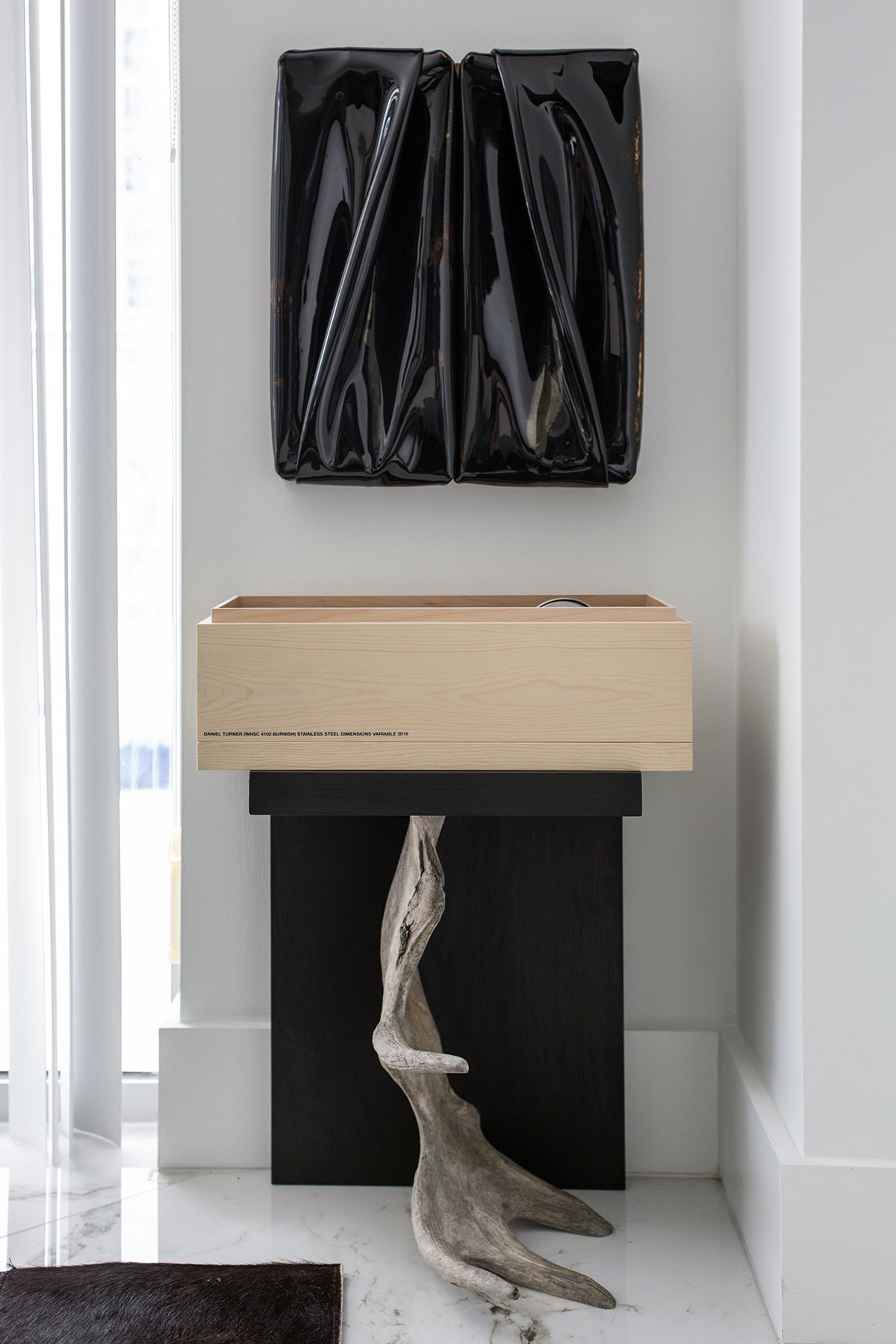
C: As of recent, collectors seem to increasingly use social media as an additional tool for scouting new works by familiar, as well as unfamiliar, artists. How do you personally feel about these new methods of discovering art? Does it also take away from important experiences—the physicality in interacting with art?
RT: I use Instagram every day, so I think it’s very helpful in seeing art and staying up to date with the art world. Framing it as a matter of taking away from the physical experience of seeing the art in person is only true if you are implying that social media should replace that. IG is a tool that helps me to see works I don’t have access to and to locate where I should go and see work I’m interested in. Here we can’t confuse the map with the territory! The goal of my social media use is to organize what to see and where to see it.
C: I suppose that’s a great way to put it, using social media as a way of organizing and planning. I suppose the danger lies within humans’ innately growing laziness, which makes some or many of them leisurely begin to replace physical interaction with social media, as it goes with witnessing and experiencing art.
RT: I would imagine this is a matter of educating the public. A person who goes to museums and exhibitions will go regardless of the convenience which social media provides them. Because of social-economic issues people are unable to devote their time to thinking about art or aesthetics. Even inside the art world itself there is a large group of people who are in it for the social currency it affords them.
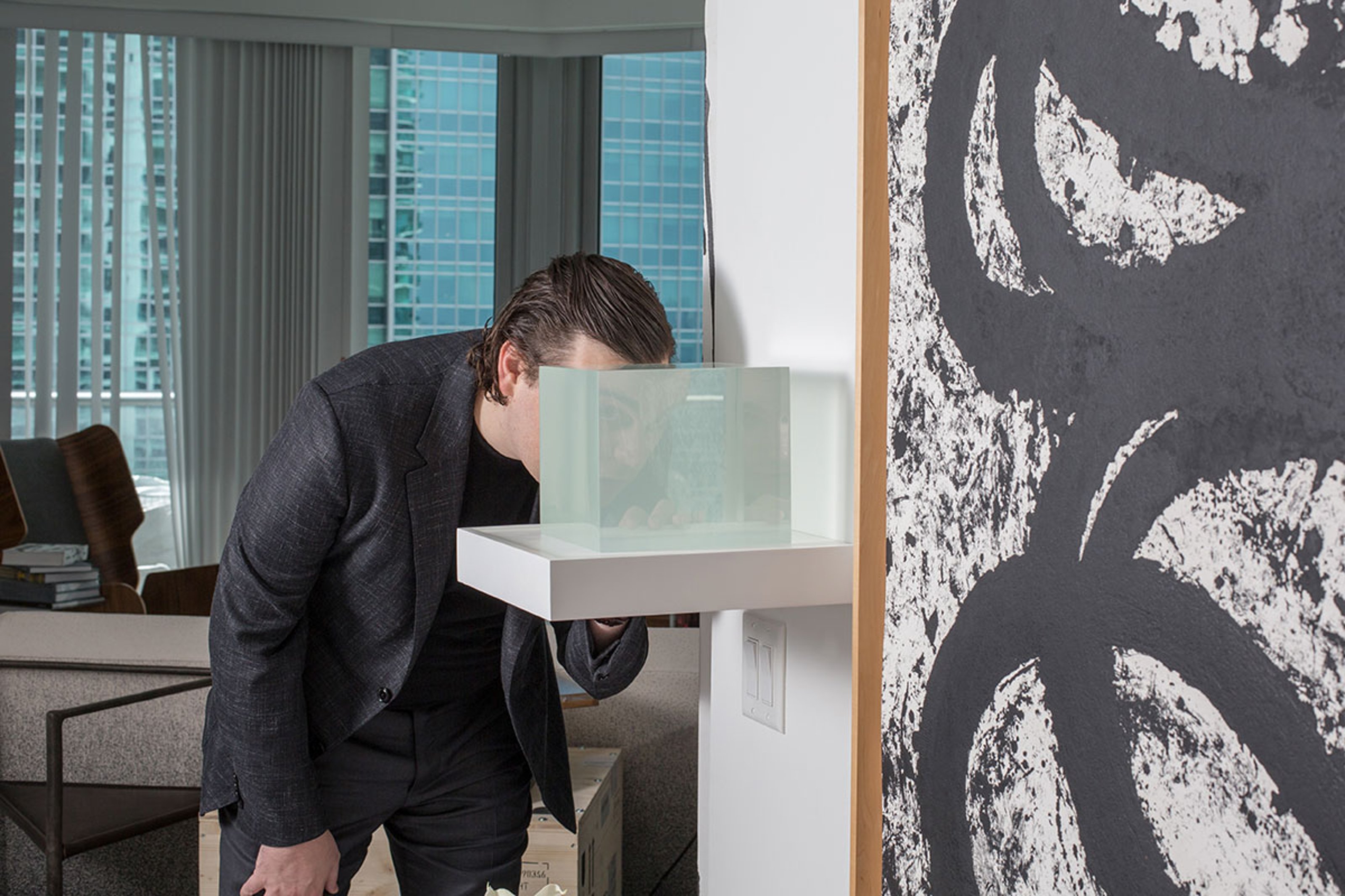
C: Do you form relationships and hold conversations with other collectors, or is your collection more private and personal? Do you see value in such a dialogue?
RT: My relationship with other collectors has been limited. That has started to change since my move to Miami where my involvement with the Institute of Contemporary Art has granted me access to private collections which are not accessible to the general public. Still, I remain more interested in a dialogue with the art and the artists. I had the opportunity to visit Paul McCarthy’s Los Angeles studio twice in the last three months. I spent more than eight hours speaking to him and Damon McCarthy about their collaborative work in the films they produce and Paul’s practice more generally.
These moments really seem to bring a kind of joy and wonder that few other events in my life can replicate. Still, those opportunities are the exception, as they are rare in the grand scheme of things. So I turn to the artworks themselves. Artworks can articulate problems and solutions on their own; this is something I always found interesting, to question life and my understanding of the world from only the implied logic of an artist’s aesthetics. This is the reason why I collect in-depth. The more work I have by an artist, the more I can contextualize their aesthetic concerns with my own.
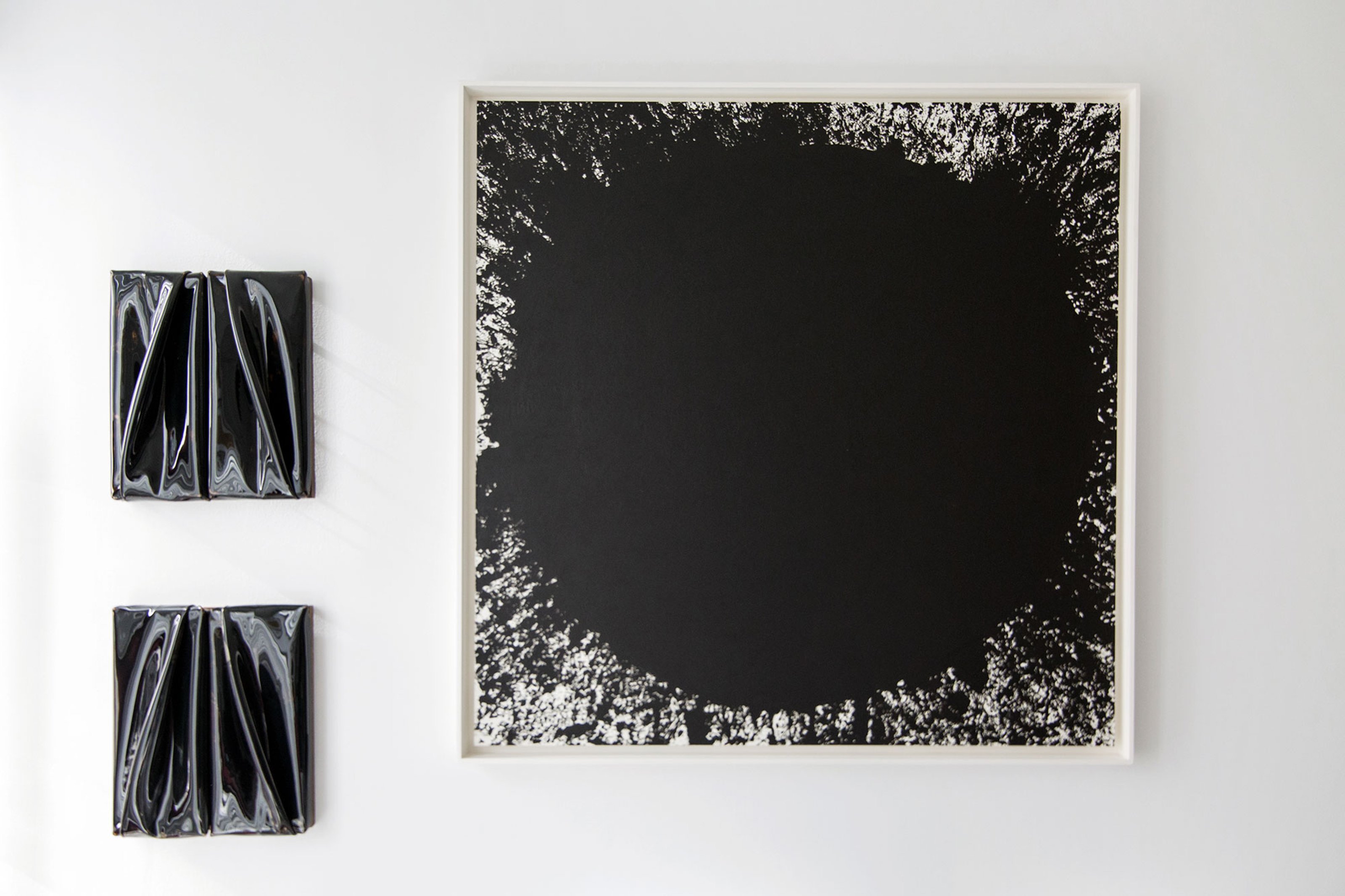
C: I recently spoke to a collector about the act of collecting. He said if humans were perfect, if they had everything they needed, there would be no need for art. Do you think art exists to fill a type of void in us? Whether it’s the artist, or the viewer…
RT: This goes back to existentialist qualms most people can relate to; cave paintings pre-date spoken language by thousands of years. Being that the case, art can be seen as an early attempt to externalize internal states… a proto-language. Because of such externalizations then it follows that, yes, art as a proto-language was about attempting to fill this void between the individual and the other in pre-linguistic times.
Would perfect communication end the need for art? Hard to say. I would argue no. We enter into contradiction all the time between our own thoughts and feelings – if anything, we’d just make art to decodify the contradictions in our own internal worlds.
Language itself is not logically complete, it can’t express all problems as shown by both early Wittgenstein & Gödel’s Incompleteness Theorem. Worse, these limitations seem to be total, as Alan Turing showed that machines run into similar problems. So this idealist perfection is not part of our current understanding of the universe from either a mathematical, logical, or computational point of view. As I said previously, the stakes in art and aesthetics are quite high – they grapple with the problems above on some level.
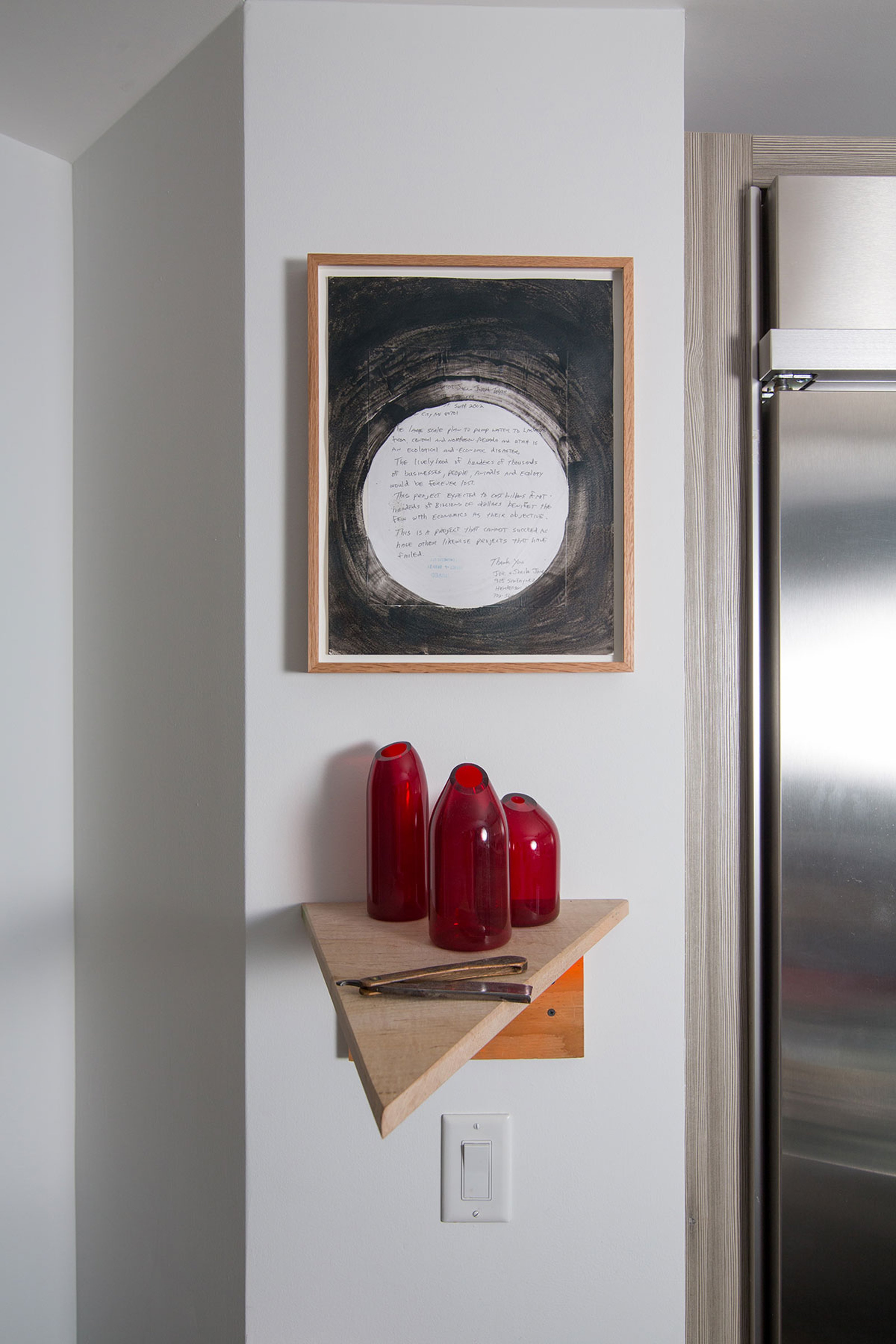
C: Do you believe in freedom? If so, when was the last time you felt free?
RT: Freedom is complicated. Freedom as in free-will? Freedom from society and expectations? I feel free in the grand scheme of things – I think that I’m taking particular actions and basing decisions on what I want for myself and my family. But, even then, there are degrees of freedom – I’m not free to transcend the limits of the human brain or free to defy the laws of physics. There are only so many possible states of our observable universe; freedom ends somewhere. Lucky for us that number is astronomically vast – likely the Bekenstein Bound, which is the maximal information you can fit inside a given finite space. This makes me feel both extremely free in the number of actions I can perform and paradoxically, extremely confined. That upper limit, as gigantic as it, is still insignificant compared to infinity.
Societal freedom is different altogether, we are bound, or surrounded, by laws and rules and customs. Oscar Tuazon’s work and research regarding “off-grid” living and anarchitecture allow for a different kind of living that, while I’m not particularly interested in carrying out for myself, has influenced the way I think. Mainly, understanding that distancing yourself from society is not necessarily a dystopian idea but potentially an utopian ideal. I like that his work fluctuates between extreme poles of complete isolation, and in turn freedom, and social and communal actions where people are sacrificing and risking themselves for one another. For example, all his activism at Standing Rock, as an example. Maybe he’d say that communes like Drop City were the intersection between both of these ideas; to find isolation as a group.
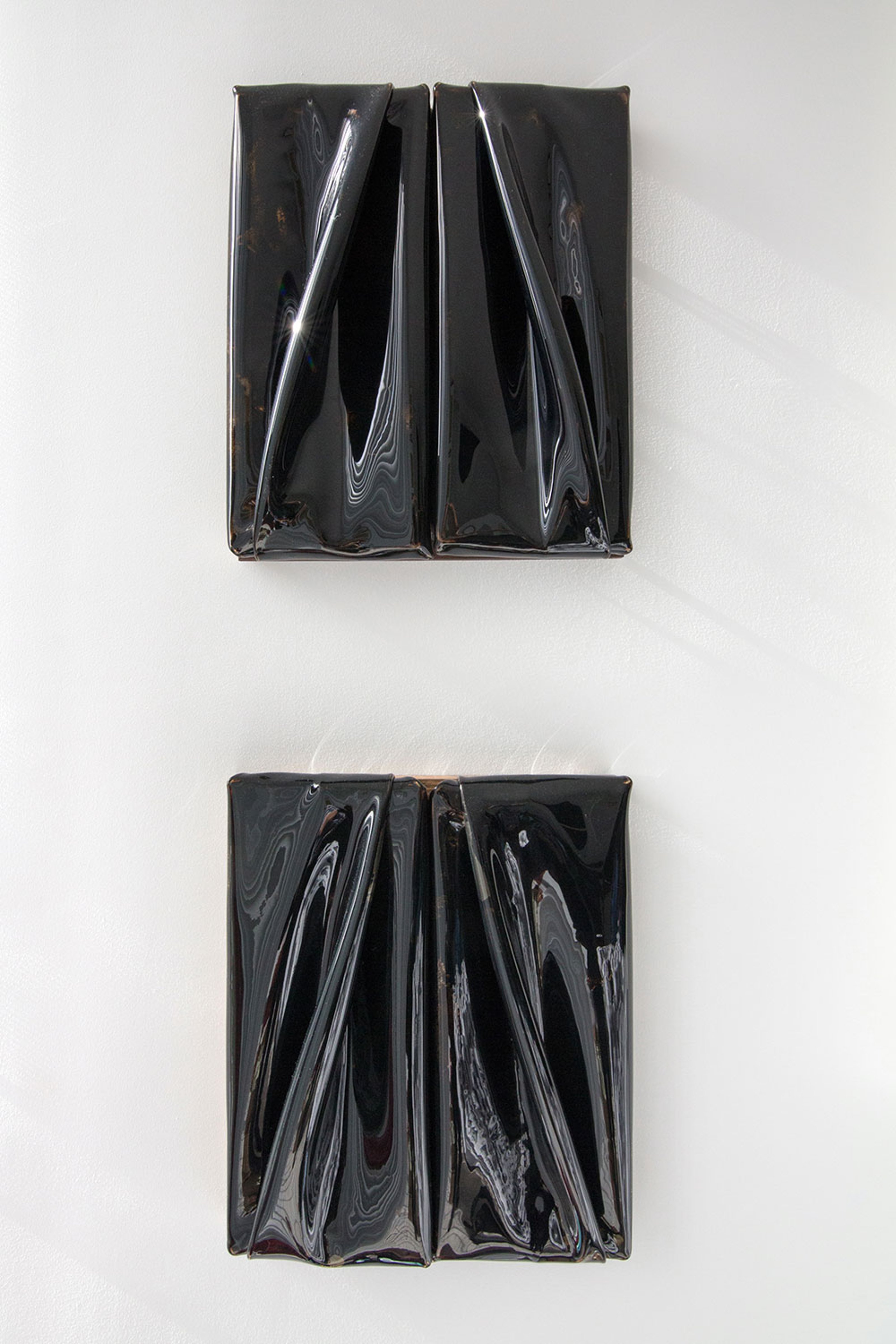
C: You’ve had a tragic year. In what ways did the loss of your brother influence the way you perceive art? Has your taste or mood for art changed?
RT: I think my relationship to certain works has changed, sure. Even though I was already interested in Mike Kelley’s work, I think my brother’s death definitely made me re-watch some of the last lectures that Mike gave. I also started thinking about McCarthy’s work in a different, more intense way… and Mike and Paul collaborated for a long time, so there are other parallels there. I read Thomas Hirschhorn’s Destroyed Human Bodies many times over. I think frequently of David Foster Wallace.
I lost my father when he was just 55 and my younger brother was only 31; it’s hard to put into words. Nadia’s support really helped me, having a partner by your side who fights for your happiness – I can’t thank her enough for that. For the support from friends. For my mother’s strength…
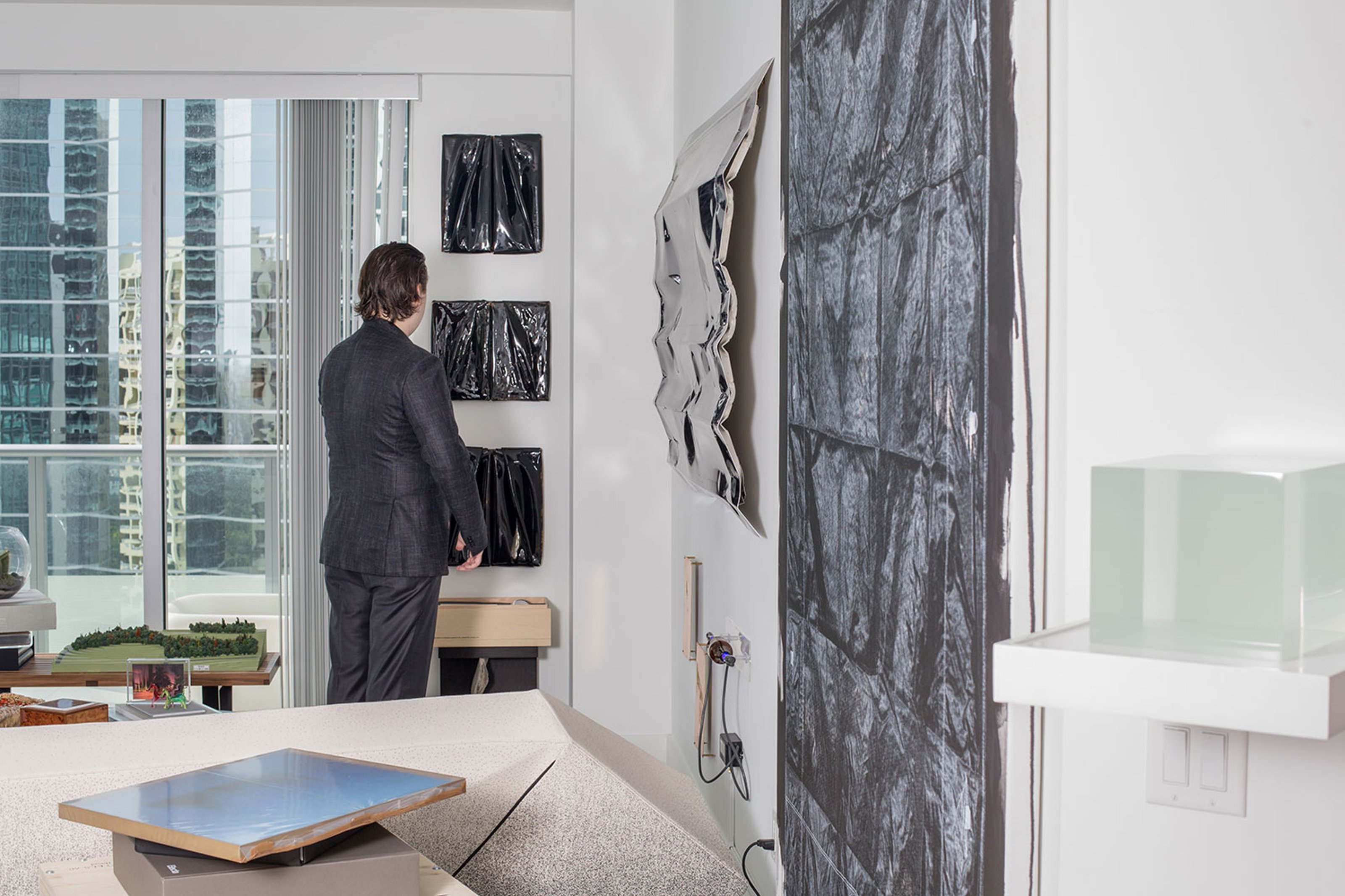
C: Who was the last artist you met and felt intimidated by?
RT: I can’t think of an actual time that this happened. The only artist I’ve ran into and decided not to bother was Richard Serra when I lived in NYC – there were many people around him and I didn’t get a sense that taking up more of his time was what he wanted. Outside of the arts it’s happened a few times – I audited an entire semester with Saul Kripke at CUNY and, even though we were only ten people in the room week to week, I think I spoke a total of zero minutes the entire time I audited the class. Another one I can remember is when I took a copy of Syntactic Structures for Noam Chomsky to sign for me; I said hello to him but didn’t have the courage to get him to sign the book!
C: What do you dislike about contemporary art and its artists?
RT: The artists I’ve met have always been nice to me – so I can’t speak ill of anyone. There are some posers and pretenders out there, but I run into people like that pretty rarely. When I stick to the segment of the contemporary art world I love, I feel content and engaged with the right members of the community.
